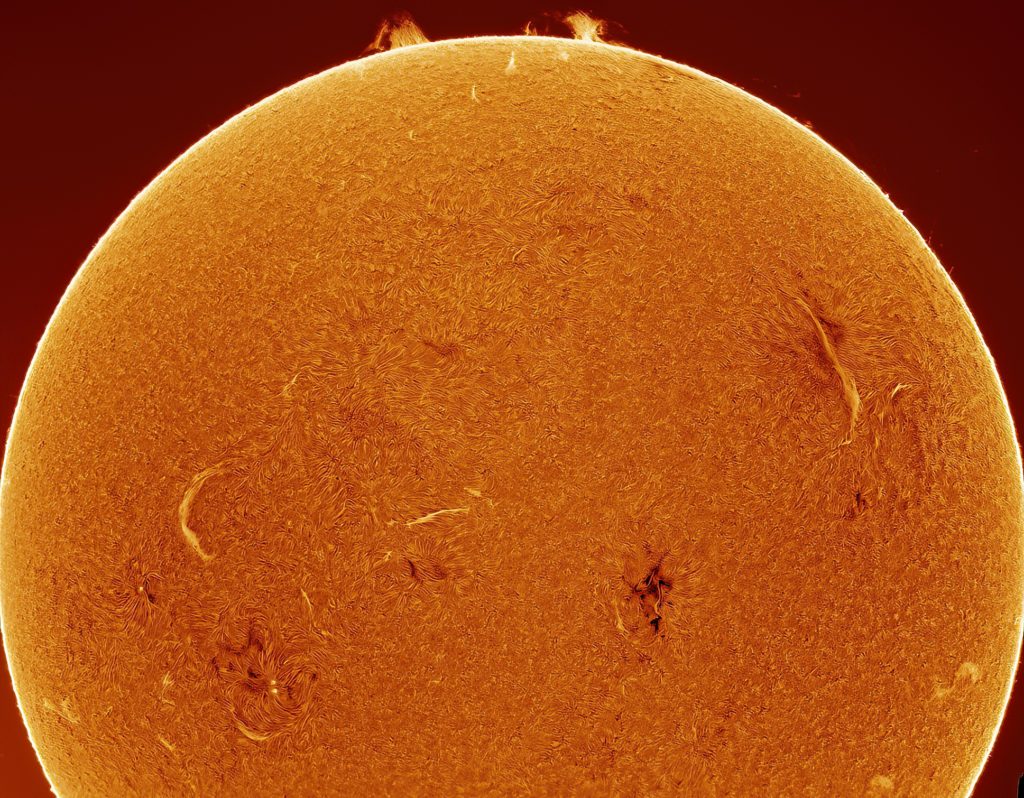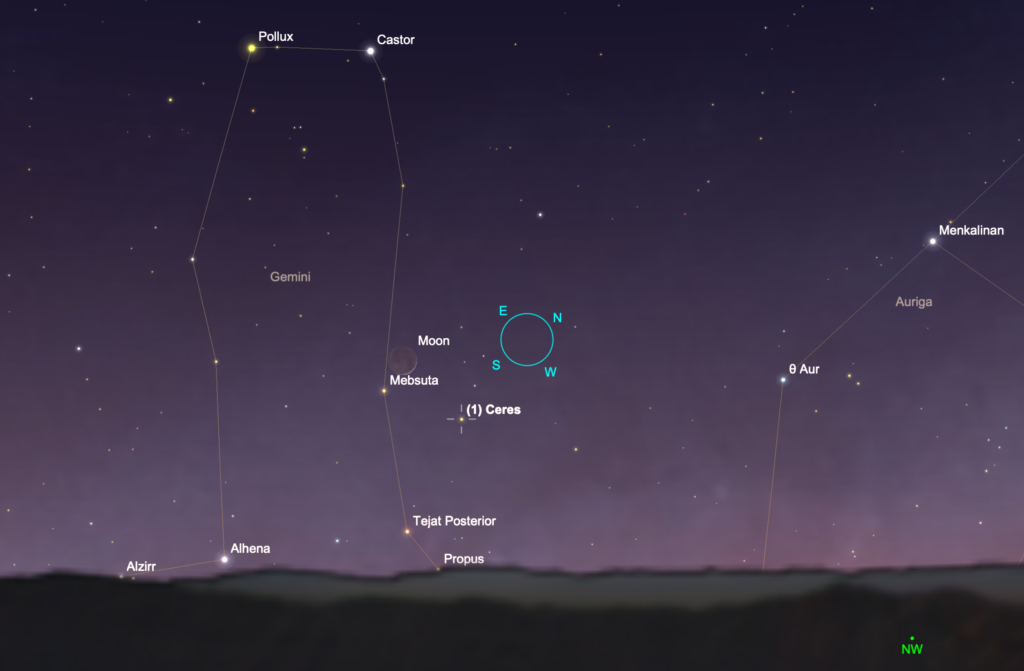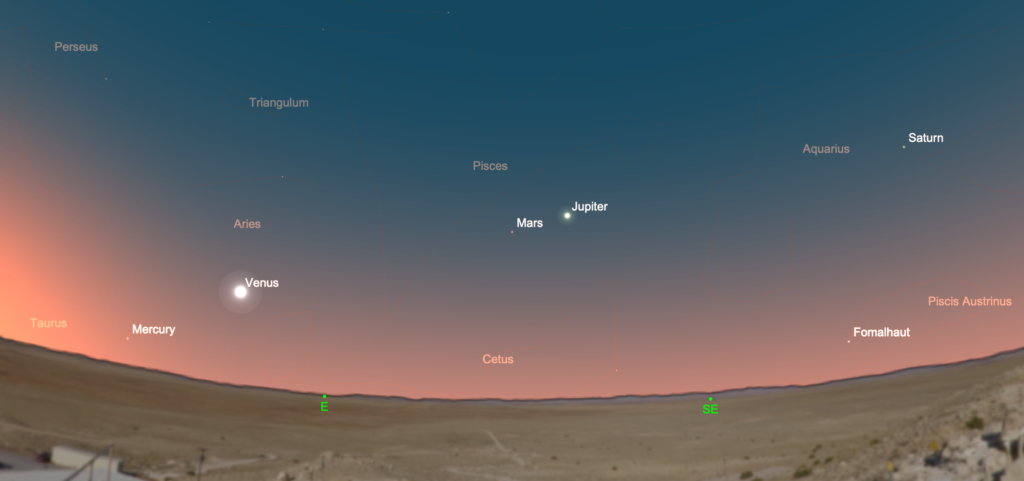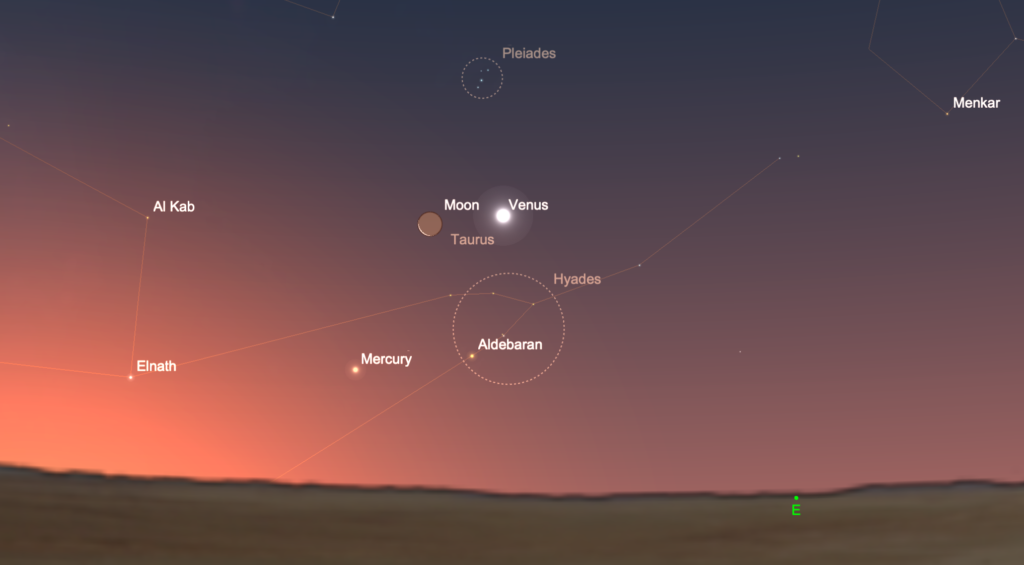
(Looking for last month’s night sky guide? You can find it at this link.)
June 2022 brings a procession of planets in the early morning sky. For much of the month, all five bright planets are visible in a long arc before the sun rises, and they’re visible from east to west in order of their distance to the Sun – a rare alignment indeed. Jupiter and Saturn grow in size and brightness and reveal plenty of fascinating detail in a small telescope, while Mars also slowly brightens and grows larger. And of course, the best part of the Milky Way returns with its rich collection of hundreds of star clusters, star-forming regions, dark nebulae, and star clouds. Here’s what to see in the night sky this month…
1 June 2022. Look for Mars and Jupiter rising together in the southwestern early-morning sky. The pair lies about 10o southeast of the ‘Circlet of Pisces’ and almost exactly between Venus to the east and Saturn to the west. Jupiter shines at magnitude -2.3, brighter than any star, while dimmer Mars shines at a respectable magnitude +0.7.

1 June. As darkness falls, look to the northwestern horizon to see the twins of Gemini standing upright as they sink towards the horizon. Also look for a very slender crescent Moon tangled in the legs of the twins. With the help of binoculars or a telescope, look for the dwarf planet Ceres (magnitude 8.7) about 3 degrees west of the Moon.
2 June. In the northwestern sky after sunset lie the two bright stars of Gemini, Castor and Pollux, and a slender crescent Moon.
5 June. Saturn reaches its stationary point and begins retrograde motion, moving westward against the background stars on its way to opposition in August. The planet lies in eastern Capricornus and shines at magnitude +0.7. Its disk spans about 17” and its rings are tilted about 13o to our line of sight.
5-6 June. The crescent Moon passes close to the star Eta Leonis this evening. From the southwestern U.S., Mexico, and Central America, the Moon occults this 4th-magnitude star. Precise timing details at this link.
7 June. First Quarter Moon, 14:48 UT

10 June. Mercury moves into the morning sky and completes an astonishing arrangement of planets in the early-morning sky. All five bright planets – Mercury, Venus, Mars, Jupiter, and Saturn are now aligned from east to west across more than 90 degrees of sky in order of their distance from the Sun. They remain so for the rest of the month. While they’re not visible without optics, Uranus and Neptune also lie within this line of bright planets, but they do not participate in this rare orderly alignment – Uranus lies between Venus and Mars, while Neptune finds itself in the space between Jupiter and Saturn.
14 June. Full Moon (“Strawberry Moon”), 11:52 UT
16 June. Mercury reaches greatest western elongation about 23° west of the Moon in the early morning sky.
18 June. As morning twilight arrives, find a clear view of the eastern horizon to find brilliant Venus and dimmer Mercury rising with the Pleiades and Hyades star clusters.
21 June. Last Quarter Moon, 03:11 UT
21 June. A quarter Moon lies about 4o from Jupiter in the southeastern morning sky.
21 June. The June solstice arrives at 09:14 UT marking the beginning of summer in the northern hemisphere and winter in the southern hemisphere, and the longest and shortest days of the year.
22 June. Mars lies about a degree north of the waning crescent Moon in the early-morning sky

25-27 June. The slender crescent Moon joins Mercury, Venus, and the Pleiades and Hyades star clusters in the eastern sky before sunrise.
29 June. New Moon, 02:52 UT